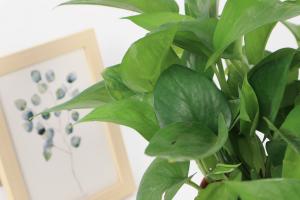What tree to plant in clay soil?
Clay soil is known for its ability to hold nutrients and water, but it can also be a challenge when it comes to planting trees. The heavy, dense soil can be difficult for tree roots to penetrate and can lead to poor drainage. However, there are several tree varieties that can thrive in clay soil. In this article, we will explore some of the best options for planting in clay soil.
1. Red Maple
The Red Maple is a hardy tree that is native to North America. It can grow up to 90 feet tall and has a spread of up to 50 feet. The tree’s deep roots allow it to penetrate clay soil and its leaves will turn a vibrant red in the fall. The Red Maple is known for its fast growth and ability to adapt to many types of soil, making it an excellent choice for clay soil environments.
2. River Birch
The River Birch is another native North American tree that is well-suited for clay soil. It can grow up to 80 feet tall with a spread of up to 60 feet. Its bark peels off in sheets, giving it a unique appearance. The River Birch is also known for its ability to thrive in wet soil conditions, making it a great choice for areas with poor drainage.
3. Bald Cypress
The Bald Cypress is a deciduous conifer that can tolerate a variety of soil types, including clay soil. It can grow up to 120 feet tall and has a spread of up to 60 feet. The tree’s unique growth habit includes knees that grow up from the roots, which can make it a conversation starter in any garden or landscape setting. The Bald Cypress is also known for its resistance to insect infestations and disease.
4. Sweet Gum
The Sweet Gum is a deciduous tree that can grow up to 75 feet tall with a spread of up to 45 feet. Its colorful leaves turn shades of red, orange, and yellow in the fall. The Sweet Gum is known for its ability to grow in a variety of soil types, including clay soil. The tree’s roots can penetrate deep into the soil to access nutrients and water, which makes it a good choice for areas with poor drainage.
5. Black Walnut
The Black Walnut is a large shade tree that can grow up to 75 feet tall with a spread of up to 60 feet. It is known for its beautiful, dark-colored wood and tasty nuts, but it can also thrive in clay soil. The tree’s deep roots can penetrate the heavy soil and access the nutrients and water it needs to grow. However, it is important to note that the Black Walnut can be toxic to some plants, so it should not be planted in areas with sensitive vegetation.
When it comes to planting trees in clay soil, it’s important to choose varieties that can adapt and thrive in this type of environment. The Red Maple, River Birch, Bald Cypress, Sweet Gum, and Black Walnut are all great options that can provide shade, beauty, and environmental benefits to any landscape or garden. Consider these options when selecting trees for your next planting project.

 how many times do yo...
how many times do yo... how many planted tre...
how many planted tre... how many pine trees ...
how many pine trees ... how many pecan trees...
how many pecan trees... how many plants comp...
how many plants comp... how many plants can ...
how many plants can ... how many plants and ...
how many plants and ... how many pepper plan...
how many pepper plan...





























